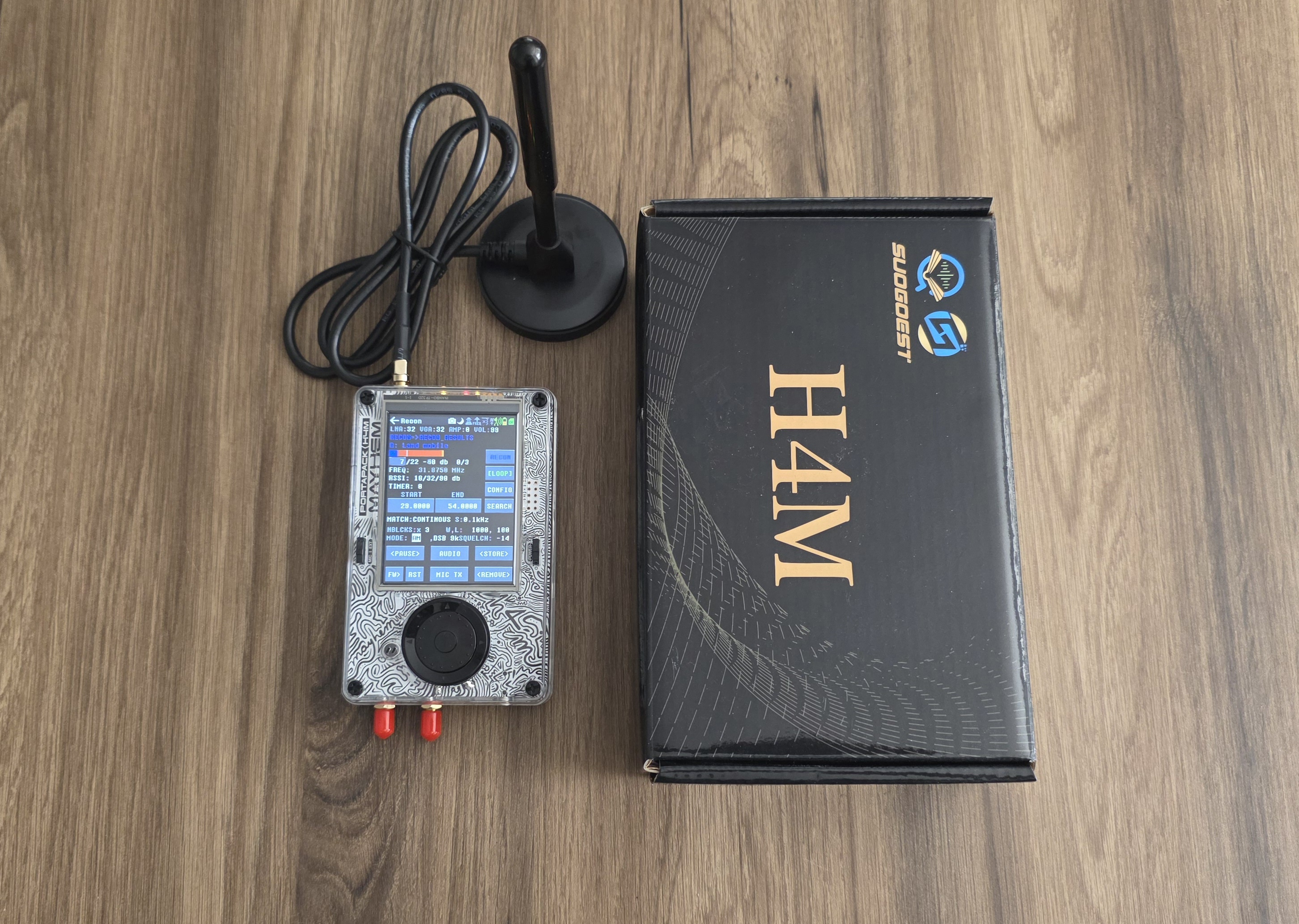Euro
(€)
- Euro (€)
- Bulgarian Lev (BGN )
- Czeck Koruna (CZK )
- Hungarian Forint (HUF )
- Polish Złoty (PLN )
- Swedish krona (SEK )
- Swiss Franc (CHF )
- Canadian Dollar (CAD )
- Mexican Peso (MXN )
- Norwegian Krone (NOK )
- Chinese Yuan (CNY )
- Indian Rupee (INR )
- Australian Dollar (AUD )
- New Zealand Dollar (NZD )
- Saudi Riyal (SAR )
- UAR Dirham (AED )
- US Dollars (USD )
- GB Pound (GBP )
- Danish Koruna (DKK )
- Romanian Leu (RON )
Categories
Categories
Categories
-
 CatalogTop All products in one place
CatalogTop All products in one place
-
 Software Defined RadioPopular Explore Signals Beyond Limits
Software Defined RadioPopular Explore Signals Beyond Limits
-
 RFID/NFC Unlock Possibilities with RFID/NFC
RFID/NFC Unlock Possibilities with RFID/NFC
-
 Antennas Antennas for every signal need
Antennas Antennas for every signal need
-
 Amplifiers Signal Boosters & LNAs
Amplifiers Signal Boosters & LNAs
-
 Radio Communication Radio Communication Essentials
Radio Communication Radio Communication Essentials
-
 Test & Measurement Unleash Precision. Reveal Signals.
Test & Measurement Unleash Precision. Reveal Signals.
-
 FPGA DevelopmentNew Accelerate Ideas. Build Hardware.
FPGA DevelopmentNew Accelerate Ideas. Build Hardware.
Home/SDRstore.eu Blog | SDR, Electronics & Tech Guides/HackRF H4M Guides/HackRF H4M Portable Spectrum Analyzer Guide
HackRF H4M Portable Spectrum Analyzer Guide

Prerequisites
- HackRF PortaPack H4M with current Mayhem firmware
- MicroSD card (FAT32) with Mayhem data files loaded
- Appropriate antenna for the band you’re analyzing (we recommend the 12 dBi 700–2700 MHz antenna included in some bundles)
- Optional: External band-pass filter/LNA for weak signals
Pick the Right App for Spectrum View
- Scanner: Sweeps across a defined frequency range and plots signal strength per step. Useful for band surveys.
- Recon: Fast, user-friendly overview of nearby activity with quick tune-in to peaks.
- Looking Glass: Real-time RF “sniffer” focused on sub-GHz activity and common protocols; good for validating peaks found by Scanner.
- WFM Spectrum (where available): Visualizes wideband FM spectrum around the tuned frequency for quick RF inspection.
Set Center/Start–Stop Frequencies
- Open your chosen app (Scanner or Recon).
- Set the target band:
- VHF broadcast: 88–108 MHz
- UHF ISM: 433.05–434.79 MHz
- L-band ADS-B: 1090 MHz
- 2.4 GHz ISM/Wi-Fi/BLE beacons: 2400–2483.5 MHz
- For Scanner: define Start, Stop, and Step (e.g., 433–435 MHz at 25–50 kHz step for detailed sweeps; larger steps for faster scans).
Adjust Gain Correctly
- Use LNA and VGA conservatively (typical working range: 16–32 dB each).
- If available, toggle the fixed Amp (~14 dB) only when needed; turn it off near strong transmitters to avoid saturation.
- Watch for clipping: if everything looks “maxed,” reduce gains to recover dynamic range.
Run a Sweep and Identify Signals
- Start the scan (Scanner) or tune around (Recon).
- Look for stable peaks (repeatable at the same frequency) and broadband noise vs. narrowband carriers.
- Select a peak to jump the tuner to that frequency for closer inspection in a receive app, if needed.
Refine Resolution vs. Speed
- Decrease Step size for higher frequency resolution (more detail, slower scans).
- Increase Step size to accelerate band sweeps (less detail, faster overview).
- Use smaller spans when characterizing a single system; larger spans to discover new activity.
Practical Band Examples
- 433 MHz ISM: 433–435 MHz, 25–50 kHz step; moderate gains to find keyfobs, sensors, and weather stations.
- VHF FM: 88–108 MHz, 100–200 kHz step; peaks correspond to broadcast stations—tune to verify audio.
- ADS-B check: 1090 MHz single-frequency view to verify local aircraft beacons (use the ADS-B app for decoding/map).
- 2.4 GHz: 2400–2483.5 MHz, larger step; identify Wi‑Fi/BLE activity hotspots (visual only; no Wi‑Fi decode here).
Visualization Tips
- Use the app’s peak hold or trace options (if available) to retain transient bursts during sweeps.
- Re-scan several times to confirm true signals vs. spurious or one-off bursts.
- Change antenna and gain per band—wideband antennas are convenient but band-tuned antennas improve SNR.
Limitations & Best Practices
- PortaPack H4M spectrum views are optimized for discovery and surveys—not a lab-grade analyzer.
- Sweep speed and detail are a trade-off; prioritize based on your task.
- Avoid high gain near strong transmitters to protect front-end linearity.
Troubleshooting
- No peaks? Verify frequency span, antenna type, and reduce step size.
- Everything “lifts” as a noise floor? Gain is likely too high—reduce LNA/VGA or disable Amp.
- Intermittent peaks: run multiple sweeps and try different times of day; many signals are bursty.
Enhance Your Setup
For broad multi-band work, we recommend our wideband 12 dBi 700–2700 MHz antenna included in some bundles to improve portable scanning performance.
Get your H4M today!
Comments
No posts found
Write a review
My account
Orders and Delivery
Customer Service
Payment Options
We support all major card and digital payment options. More local methods are available and shown during checkout.
You enter into a binding sales contract once you have received an 'order confirmation and sales receipt' email from us, in line with our Sales & Delivery conditions. Therefore, sdrstore.eu has the right to cancel your order in the event of technical problems, delivery failure, Fair use policy and other similar situations.
Delivery carriers
© 2023 - 2025 SDRstore.
